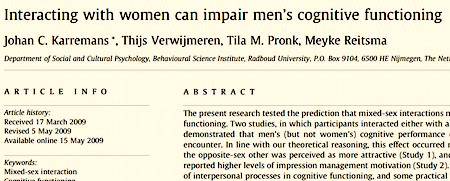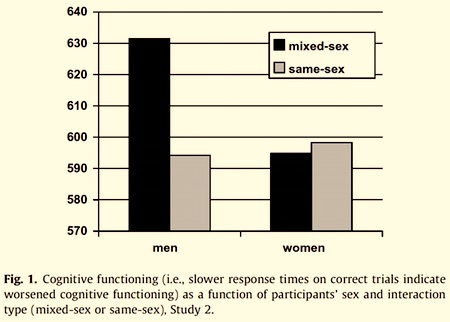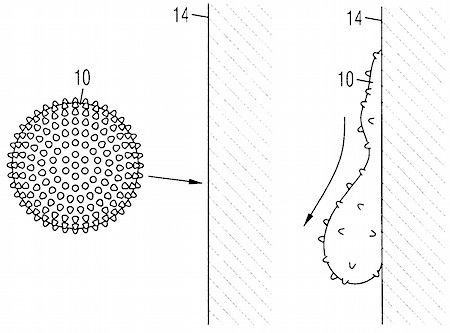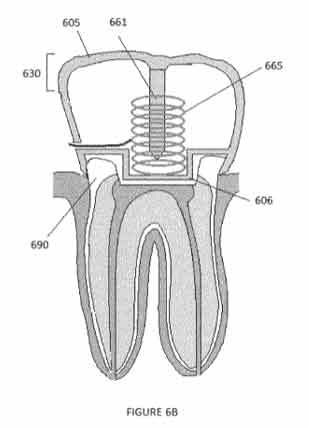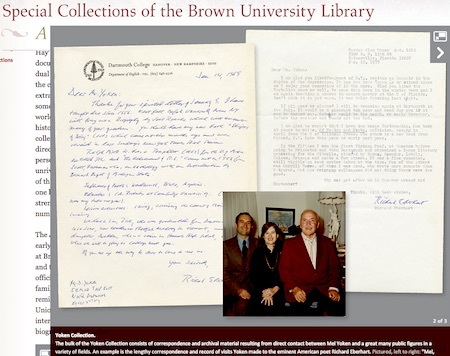Marc Abrahams's Blog, page 324
June 12, 2015
Zimbabwean explains what will happen to bank accounts larger than $175 quadrillion
The Reserve Bank of Zimbabwe, the nation’s government bank, which officially controls the nation’s money, announced an end game for the famous Zimbabwean dollars. The dollars earned an Ig Nobel Prize for the bank’s previous president, Dr. Gideon Gono. The 2008 Ig Nobel Prize for mathematics was awarded to Gideon Gono, governor of Zimbabwe’s Reserve Bank, for giving people a simple, everyday way to cope with a wide range of numbers — from very small to very big — by having his bank print bank notes with denominations ranging from one cent ($.01) to one hundred trillion dollars ($100,000,000,000,000). [Dr. Gono explained his reasoning in creating that money, in the book Zimbabwe’s Casino Economy — Extraordinary Measures for Extraordinary Challenges, Gideon Gono, ZPH Publishers, Harare, 2008, ISBN 978-079-743-679-4.]
This month — June 2015 —the bank issued an official statement, which specifies the terms of the end-times conversion:
After 30 September 2015 bank notes that have not been exchanged shall be considered demonetised or decommissioned. Bank Account Holders Banks will pay the equivalent US$ amount for each account balance as at 31 December 2008 converted as follows: a) Accounts with balances of Zero to Z$175 quadrillion will be paid a flat US$5. b) Accounts with balances above Z$175 quadrillion will be paid the equivalent value after applying the UN exchange rate of US$1/Z$35 quadrillion or US$1/Z$35,000 (revalued)
Many news reports present further details of the conversion. See, for example The Guardian’s report called “Zimbabwe offers new exchange rate: $1 for 35,000,000,000,000,000 old dollars“.
Here is a picture of one of a Zimbabwe $100 trillion dollar bill:
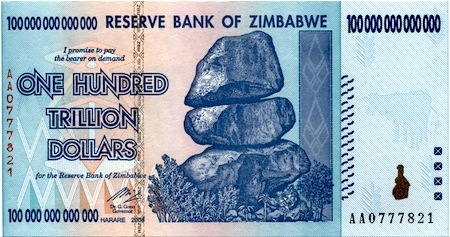
(Thanks to Gennadiy Kosoy for bringing this to our attention.)

Recent progress in Quidditch studies (part 1)

 For those interested in following recent academic attention afforded to Quiddich may we recommend, Quidditch : Impacting and Benefiting Participants in a Non-Fictional Manner (in the Journal of Sport and Social Issues December 7, 2014) by professor Adam Cohen (Texas Tech University, Lubbock, USA) and professor Jon Welty Peachey (University of Illinois, Champaign, USA).
For those interested in following recent academic attention afforded to Quiddich may we recommend, Quidditch : Impacting and Benefiting Participants in a Non-Fictional Manner (in the Journal of Sport and Social Issues December 7, 2014) by professor Adam Cohen (Texas Tech University, Lubbock, USA) and professor Jon Welty Peachey (University of Illinois, Champaign, USA).
“This study examines the sport of quidditch, based on the Harry Potter franchise, an alternative sport growing in popularity. The purpose of this research was to examine the impact and benefits participants of this sport received and determine similarities and differences to mainstream sport activities. Findings suggest involvement with quidditch provided leadership skills, social gains, self-confidence, and pride, along with a positive sporting experience, all of which have been recognized in more mainstream sports. Considering the need for inventive and fiscally viable sports programs due to shrinking budgets and increased burnout, this study advocates the potential value of alternative sport initiatives and the benefit of their implementation.”
Coming soon: A virtual Quidditch simulator

Studies: “Interacting with Women Can Impair Men’s Cognitive Functioning”
As discussed in this week’s podcast, some scholars believe that “Interacting with Women Can Impair Men’s Cognitive Functioning.” That is the title and theme of a Dutch study published in 2009. The study is:
“Interacting with Women Can Impair Men’s Cognitive Functioning,” Johan C. Karremans, Thijs Verwijmeren, Tila M. Pronk, and Meyke Reitsma, Journal of Experimental Social Psychology, vol. 45, no. 4, 2009. (Thanks to Joan Baugh and Vicki Hollett for bringing this to our attention.) The authors, at Radboud University in Nijmegen, the Netherlands, report:
“The present research tested the prediction that mixed-sex interactions may temporarily impair cognitive functioning. Two studies, in which participants interacted either with a same-sex or opposite-sex other, demonstrated that men’s (but not women’s) cognitive performance declined following a mixed-sex encounter. In line with our theoretical reasoning, this effect occurred more strongly to the extent that the opposite-sex other was perceived as more attractive (Study 1), and to the extent that participants reported higher levels of impression management motivation (Study 2). Implications for the general role of interpersonal processes in cognitive functioning, and some practical implications, are discussed.”
Here’s graphic detail from the study:
A later study, by partially the same team, suggests the effect can happen even if a woman is only mentally (in the man’s mind, that is) — but not physically — present. That study is:
“The Mere Anticipation of an Interaction with a Woman Can Impair Men’s Cognitive Performance,” Sanne Nauts, Martin Metzmacher, Thijs Verwijmeren, Vera Rommeswinkel, and Johan C. Karremans, Archives of Sexual Behavior, vol. 41, no. 4, 2012, pp. 1051-1056. The authors report:
“Recent research suggests that heterosexual men’s (but not heterosexual women’s) cognitive performance is impaired after an interaction with someone of the opposite sex (Karremans et al., 2009). These findings have been interpreted in terms of the cognitive costs of trying to make a good impression during the interaction. In everyday life, people frequently engage in pseudo-interactions with women (e.g., through the phone or the internet) or anticipate interacting with a woman later on. The goal of the present research was to investigate if men’s cognitive performance decreased in these types of situations, in which men have little to no opportunity to impress her and, moreover, have little to no information about the mate value of their interaction partner. Two studies demonstrated that men’s (but not women’s) cognitive performance declined if they were led to believe that they interacted with a woman via a computer (Study 1) or even if they merely anticipated an interaction with a woman (Study 2). Together, these results suggest that an actual interaction is not a necessary prerequisite for the cognitive impairment effect to occur. Moreover, these effects occur even if men do not get information about the woman’s attractiveness.”
Recent events, inspired by Nobel laureate Tim Hunt, have produced pictorial evidence that women can be distractingly sexy.

June 11, 2015
The effect of gravity on slimy little men
These videos show the effect of gravity on slimy little men — the kind of slimy little men called “Peta Peta men”:
General effects:
An ungentle experiment:
BONUS: US patent 6527616, issued March 4, 2003, for a “Throwing toy for producing splash effect” which “is comprised of a sticky elastomer shell around a liquid core. The shell is comprised of a thermoplastic rubber mixed with a petroleum based oil in a ratio that produces an extremely soft shell. The core is comprised of clarified water. When the toy is thrown against a wall, it greatly flattens to produce a splash effect, sticks to the wall temporarily, slowly reforms into its original shape as it drips down the wall, and falls off the wall.” Here’s further detail from the patent document:

June 10, 2015
Podcast #15: Where do messes come from?
Messes, burglars, cheese, spaghetti, and bugs (and other things) turn up in this week’s Improbable Research podcast.
SUBSCRIBE on Play.it or iTunes, to get a new episode every week, free.
[NEWS: Soon, the podcast will also be available on Spotify.]
This week, Marc Abrahams tells about:
Where do messes come from. (“Disorganization Theory and Disorganizational Behavior: Towards an Etiology of Messes,” Eric Abrahamson, Research in Organizational Behavior, vol. 24, 2002, pp. 139–80. / Etiology. / Featuring dramatic readings by James Harkin (@eggshaped), who researches and performs at QI, the Museum of Curiosity, and No Such Thing As a Fish.) Here is a photo (by Luca Masters, via Wikimedia) of a mess:

The Messy Desk Effect (“The Messy Desk Effect — How Tidiness Affects the Perception of Others,” Sarah Sitton, Journal Of Psychology, vol. 117, no. 2, 1984, pp. 263-7. Featuring dramatic readings by Nicole Sharp (@fyfluiddynamics), who created and produces FYFD.)
Soft Is Hard. (“Interacting with Women Can Impair Men’s Cognitive Functioning,” Johan C. Karremans, Thijs Verwijmeren, Tila M. Pronk, and Meyke Reitsma, Journal of Experimental Social Psychology, vol. 45, no. 4, 2009. / “Inhibitory Spillover: Increased Urination Urgency Facilitates Impulse Control in Unrelated Domains,” Mirjam A. Tuk, Debra Trampe and Luk Warlop, Psychological Science 22, no. 5 (2011): 627-633. / “I 5683 You: Dialing Phone Numbers on Cell Phones Activates Key-Concordant Concepts,” Sascha Topolinski, Psychological Science, epub before print, January 26, 2011. / “I Can’t Believe This Isn’t Wood! An Investigation in the Perception of Naturalness,” Krista E. Overvliet and Salvador Soto-Faraco, Acta Psychologica, vol. 136, no. 1, January 2011, pp. 95–111. / “The Sex Lives of Cult Television Characters,” Dr. Sara Gwenllian Jones, Screen, vol. 43 no. 1, Spring 2002, pp. 79–90. / “Collective Behavior in Road Crossing Pedestrians: The Role of Social Information,” Jolyon J. Faria, Stefan Krause, and Jens Krause, Behavioral Ecology, vol. 21, no. 6, 2010, pp. 1236-42. Featuring dramatic readings by Daniel Rosenberg, who demonstrates chemistry and physics)
The burgler and the cheesy toothmark. (“Saliva from Cheese Bite Yields DNA Profile of Burglar: A Case Report,” D. Sweet and D. Hildebrand, International Journal of Legal Medicine, vol. 112, no. 3, 1999, pp. 201–3.). Featuring dramatic readings by Corky White (@merrycorkywhite), who studies food and people.)
Why spaghetti. (“Localization of Breakage Points in Knotted Strings,” Piotr Pieranski, Sandor Kasas, Giovanni Dietler, Jacques Dubochet, and Andrzej Stasiak, New Journal of Physics, vol. 3, June 2001, p. 1-13). Featuring dramatic readings by Ben Lillie (@BenLillie), co-creator of The Story Collider.)
What matters in NBA games. (“Safe Leads and Lead Changes in Competitive Team Sports,” Aaron Clauset, M. Kogan, and S. Redner, arXiv:1503.03509v1, 11 Mar 2015.). Featuring dramatic readings by Jean Berko Gleason (@JeanBerkoG), who created The Wug Test.)
Infestigations that Bug a person. (Hurd, Paul D., Jr (1954). ‘“Myiasis” Resulting from the Use of the Aspirator Method in the Collection of Insects.’ Science 119 (3101): 814–15. / “Condom barrier in a mouth‐operated aspirator prevents inhalation of debris when handling small insects,” Yinshan Tang, Medical and Veterinary Entomology, vol. 10, no. 3, 1996, pp. 288-290.). Featuring dramatic readings by Daniel Rosenberg.)
Weezers. (“Criteria for Deciding When to Obtain Chest Radiographs in First Time Wheezers,” J. Gershel, Pediatric Emergency Care, volume 14, no. 6, December 1998, p. 452. / “An Offbeat Wheezer,” E.R., Alpern and M.W. Stevens, Pediatric Annals, vol. 29, no. 2, February 2000, pp. 97-101. / “The Wheezer that Wasn’t,” J.I Singer, et al., Pediatric Emergency Care, vol. 8, no. 2, April 1992, pp. 107-9. / “Chronic Wheezers. Treat and What the Hell!” G.M. Cochrane, The European Respiratory Journal, 1990 vol. 3, no. 9, October 1990, pp. 1094-6). Featuring dramatic readings by Nicole Sharp.)
The mysterious John Schedler perhaps did the sound engineering this week.
The Improbable Research podcast is all about research that makes people LAUGH, then THINK — real research, about anything and everything, from everywhere —research that may be good or bad, important or trivial, valuable or worthless. CBS distributes it, both on the new CBS Play.it web site, and on iTunes (and soon, also on Spotify).

Jaw power (new patent)
“As electronics devices become increasingly powerful and smaller, powering these devices has become a significant concern. It may be troublesome to find compatible power sources when a user is frequently mobile and devices often require multiple recharges per day.”
There’s now a new energy-harvesting solution to the problem – the chew-powered fake-tooth piezoelectric generator. It’s the subject of a new (03 June 2015) US patent from inventors Thomas R. Trumbull and Timothy P. Johnston of Los Gatos, California.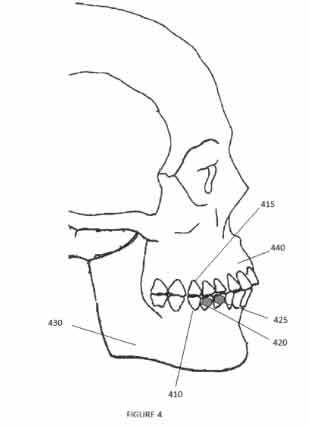
“The apparatus may be implemented in an artificial tooth or fake tooth such as a pontic. In this embodiment, the artificial tooth may comprise a first portion configured to be fixed with respect to a user’s upper jaw or the user’s lower jaw, a second portion configured to be movable with respect to the first portion and an electric generator adapted to generate electric energy from relative motion between the first portion and the second portion.”
“Mechanically stressing the portion of the electric generator comprises at least one of opening a human jaw, and closing the human jaw. The method may further comprise storing the electric energy in a battery.”
See: Jaw powered electric generator: US patent 9,044,291 B2
Note: Los Gatos (literally: ‘The Cats’) is not far from Mount Umunhum (literally: ‘Resting Place of the Hummingbird’).

June 9, 2015
The Mel B. Yoken Collection: Belles letters in profusion
We recently had the honor and pleasure of meeting Professor Mel. B Yoken — the very same Mel B. Yoken whose collection of 200,000 letters from great personages is housed at Brown University.
The Mel. B. Yoken Collection was profiled, some years ago, in The Indy, a Brown student newspaper, by Ellora Vilkin. The full article is online. Here are snippets:
DEAR MEL
One man. 200,000 letters.
There was a time when people wrote letters. So when Mel Yoken, then studying for a Masters degree in French at Brown University, sent a letter to Jules Romains in 1961, he wasn’t surprised to get one back. He had just read Romains’s play Knock, ou le triomphe de la médicine in a literature class and, having “laughed [his] you-know-what off,” wrote Romains to tell him so. Yoken recalls the exchange easily: “He wrote me back and I wrote him back and we started a friendship. And over the years, thousands and thousands of friendships have started that way.”
The resultant correspondence forms the peculiar Mel B. Yoken Collection, housed in the Hay since 1999. With new boxes of letters arriving each year, the archive now holds the missives of some 4,000 French, Spanish, American, Canadian, Scottish, Irish, and British luminaries. More recently, Yoken has enriched his personal correspondence with purchased items from some of history’s greats: the archives now contain letters from Zola, Monet, Matisse, and others bought at auction. Most, though, are written in English and French and addressed directly to Yoken; at last count, there were more than 200,000.
Post man
Yoken, 74, stands in the lobby of the Hay wearing a sensible blue suit and square-toed shoes. He gestures towards the Reading Room with a sweep of his arm and an “après-vous.” A Fall River, RI native, he has just driven up from the University of Massachusetts-Dartmouth, where he is Chancellor Professor Emeritus of French.
Besides his archives, Yoken loves baseball, collects postcards and stamps, and dabbles in meteorology. “Every single day of my life for the past 55 years—90 percent correct,” he boasts. As for the letters, he says they sprang from his natural curiosity. “I always wanted to get to the crux of the poem or the paragraph or the play. If I read a poem and I didn’t understand a line or something, I would write to the author,” he explains. The practice served him well while at Brown. “I always got good grades because I’d added quotes from the authors,” he chuckles….
In 2010, the John Hay Library mounted a special exhibition of letters from The Mel B. Yoken Collection. The Library issued a proud announcement of the event:
For academic as well as personal reasons, Dr. Mel B. Yoken has been in correspondence with thousands of notable individuals from around the world over the past five decades, and has collected their letters to create an invaluable archive in the Mel B. Yoken Room on the third floor of the John Hay Library. This exhibition, which is located on the first floor of the library near the entrance, offers a small glimpse of the collection, which ultimately consists of more than 200,000 sheets of correspondence from notables worldwide.
These letters are of extremely significant historical value, as they are clearly one-of-a-kind, and offer insight into the minds of some of the world’s most influential people, present and past; therefore, this exhibit is something one should not miss.
The collection is also featured in the library’s guide to “Special Collections of the Brown University Library” [see the image, above, which reproduces part of that announcement].
Professor Yoken informs us (1) that the collection has now grown to include more than 400,000 letters, and (2) that he is happily, almost constantly adding new items to it.
A back-of-the-envelope calculation indicates that those two totals — 200,000 or 400,000 — represent approximately ten (10) or twenty (20) letters per day, every day, over what is now a span of approximately sixty (60) years.
BONUS: Here’s Mel on Chinese TV:
EXTRA BONUS: Here’s Mel with Sha Rene’ and Meryl Streep:
BONUS (mostly unrelated): Postal experiments

June 8, 2015
The True Odor of the Odorous House Ant
Although many species of frog have been scientifically classified by smell (a feat honored by the 2005 Ig Nobel Prize in biology), relatively few ants have been so analyzed. That situation has now begun to be remedied. This study
“The True Odor of the Odorous House Ant,” Clint A. Penick and Adrian A. Smith, American Entomologist, vol. 61, no. 2, Summer 2015, pp. 85-87. (Thanks to Matt Shipman for bringing this to our attention.) The authors, at North Carolina State University and the University of Illinois at Urbana-Champaign, report:
This species belongs to a large group of ants whose members are thought to smell like blue cheese, yet numerous online sources report their odor as “rancid butter,” “cleaning solution,” or, most commonly, “rotten coconuts.” Some sources have even gone so far as to rename the odorous house ant the “coconut ant.” … We investigated the volatile compounds released by the odorous house ant and the foodstuffs most commonly associated with their scent….
Based on our chemical analysis, the major component of the odorous house ant scent was 6-methyl-5-hepten-2-one, a methyl ketone that has been identified in other ant species. The most prominent compounds associated with blue cheese were also methyl ketones, but no methyl ketones were found in fresh coconut. Once coconut turned rotten, however, it developed a distinct odorous house ant scent and released the same methyl ketones found in blue cheese. Interestingly, the microbes that turn coconut oil rancid—Penicillium mold—are the very same microbes used to make blue cheese….
So what does the odorous house ant smell like? Our results point to blue cheese, with a cautious nod to rotten coconut.

Goo Labs’ search engine for Kawaii, things that are cute
 Japan, arguably the world’s epicentre of cuteness, has the word ‘Kawaii’ to refer to an entity’s degree of cuteness. With this in mind, researchers at Goo Labs developed an unusual internet search engine – one which attempted to rank results according to how cute they were.
Japan, arguably the world’s epicentre of cuteness, has the word ‘Kawaii’ to refer to an entity’s degree of cuteness. With this in mind, researchers at Goo Labs developed an unusual internet search engine – one which attempted to rank results according to how cute they were.
Details were provided in Chapter 12 of the 2012 book from CRC Press ‘Advances in Affective and Pleasurable Design’.
The Kawaii Search Engine is now up and running [at a new www address] but Improbable’s endeavours to understand exactly how it outperforms other engines in the cuteness domain have met with little, if any, success.
Further info: A (roughly) translated Goo Labs press-release from 2011 can be found here.

June 7, 2015
Read about the physics of a theremin, or watch a cat play one?
The choice is yours: (1) read about “The Physics of the Theremin“; or (2) watch a cat play a theremin:
Of course, you can choose to do both.
(Thanks to Lauren Maurer Trew for bringing this to our attention.)

Marc Abrahams's Blog
- Marc Abrahams's profile
- 14 followers


